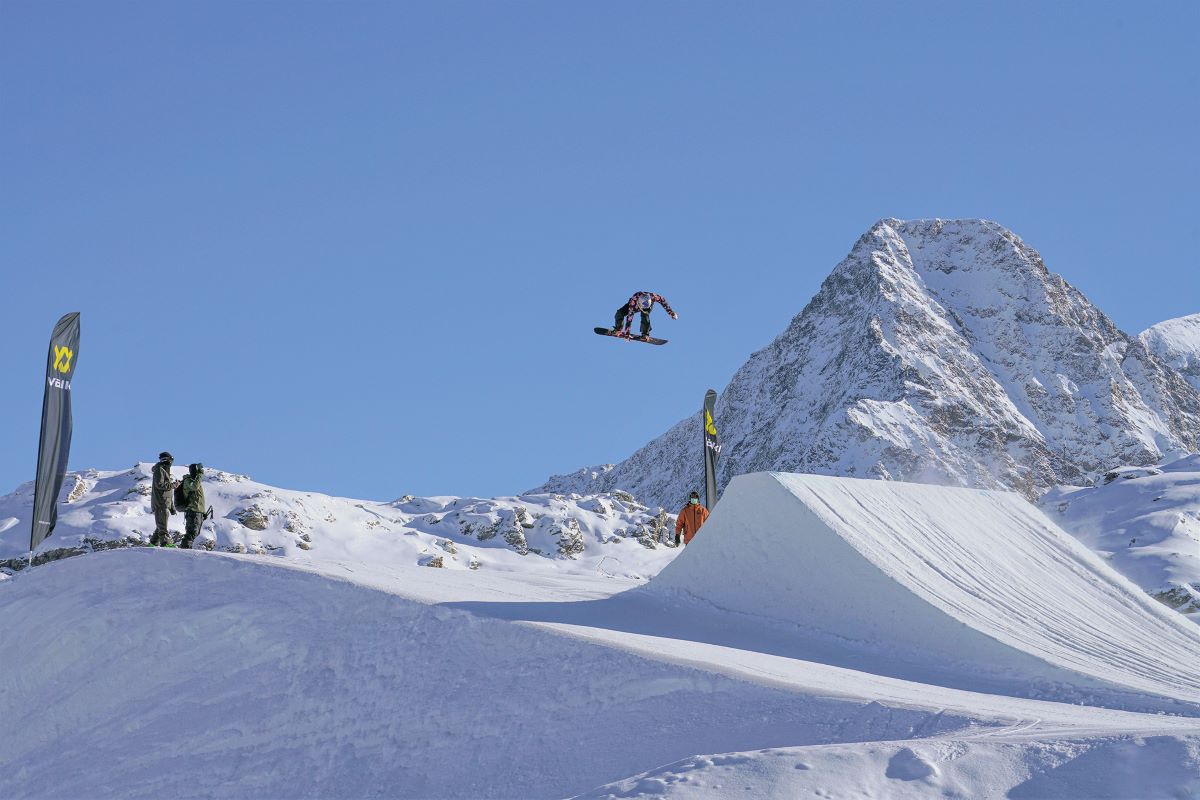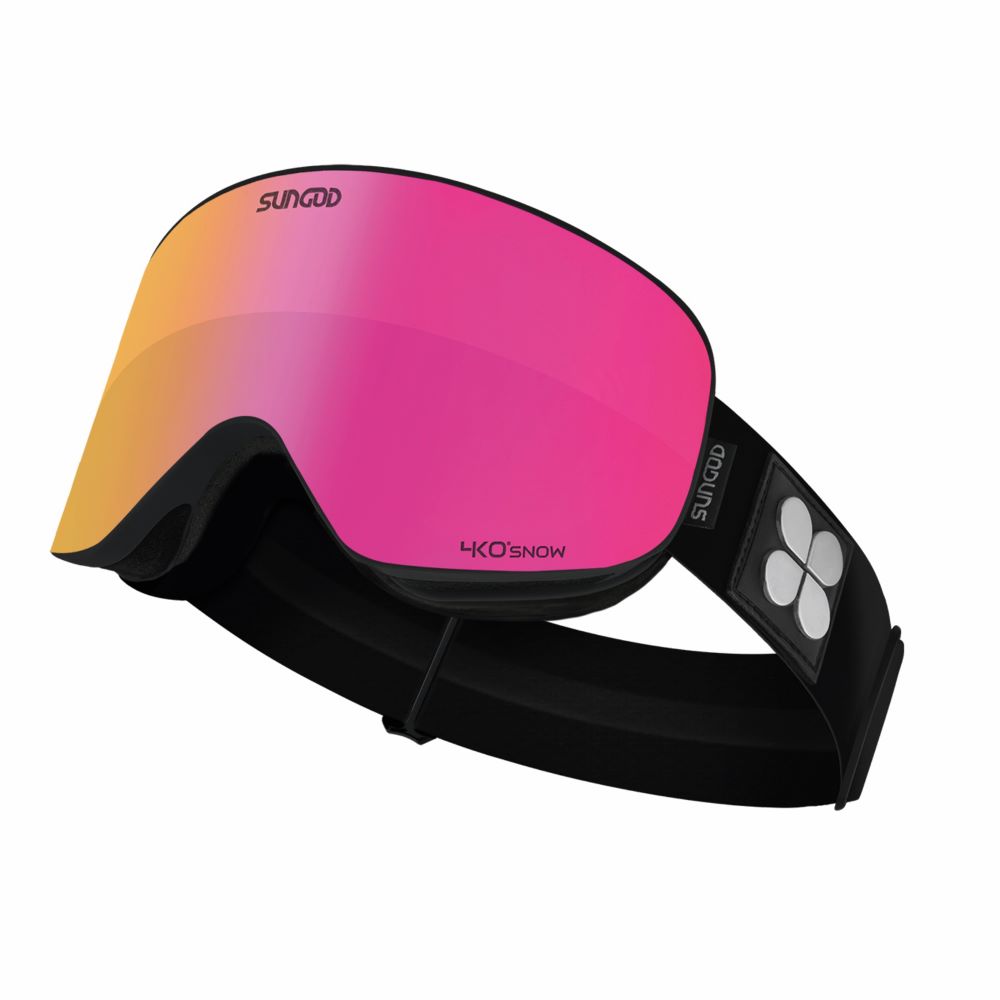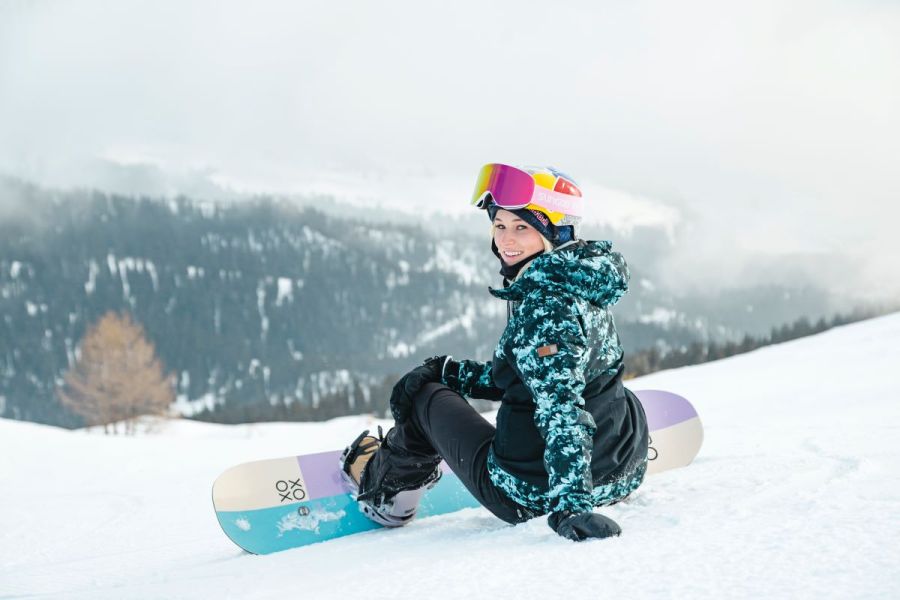Team GB snowboarder Katie Ormerod is a World Cup holder in Freestyle Snowboard. She reveals the strength and conditioning secrets that keep her fit to compete in this challenging winter sport…
Famous for her thrilling big air tricks, Katie Ormerod is one of the world’s most-talented freestyle snowboarders. The fearless athlete learned to board aged just five when her parents took her to a dry slope in the hills above Halifax, West Yorkshire (where she still trains today).
However, it was competing in county-level gymnastics from the age of four that equipped her with the skills she’d need to become an aerial acrobat. Aged 15, Ormerod became the youngest girl to complete a double backflip on a snowboard and, at 16, she achieved the world’s first female backside double cork 1080 (two full flip and spin rotations).
Not a sport for the faint-hearted, freestyle snowboarding demands huge physical and mental strength, highly developed spatial awareness and a steely mindset. During slopestyle events, Ormerod performs gravity-defying twists, jumps and flips on a skateboard-style course featuring obstacles such as ramps and rails. For big air competitions, she snowboards down a 60m ramp at speeds
of 40-50mph, launching from an 18m ledge to execute her gravity-defying, mid-air tricks.
In 2018, Ormerod’s career was threatened by injury when she shattered her heel in training, days before the PyeongChang Winter Olympics. Seven operations later, she defied her coaches’ expectations and fought back to win the Snowboard Slopestyle World Cup 2020, becoming the first British woman to win a Crystal Globe.
These days, Ormerod stays strong and injury free with daily strength and conditioning sessions. Just 5ft 2in, the athlete can deadlift 80kg. She complements her gym work with regular gymnastics training and yoga. We caught up with Ormerod to discover the exact regime that keeps her body and mind prepared for those seemingly impossible stunts…
Katie Ormerod on getting competition fit
‘I’m currently training for a busy competition season. I’ve got a lot of big events coming up, including the World Championships in March, so I’m just aiming to be ready for all of them. I’m based at home doing dry-land training, which includes a couple of hours of strength and conditioning training in the gym, plus yoga most days. Once I’m snowboarding, I usually train from 9am-4pm, performing tricks on freestyle jumps and rails.’
Building strength
‘My gym training is as much about preventing injury throughout the season as it is about getting strong. I need to keep my body robust so if I have any tumbles, I’ll bounce back and not be injured. During my sessions, I focus on legs and core. My favourite exercises are trap bar dead lifts, leg extensions, Romanian deadlifts lifts (RDLs), single-leg RDLs and leg presses.
‘I do a lot of single-leg strength and stability work – I’ve had injuries on both legs so I find it beneficial to focus on each leg individually so they’re both getting strong, rather than one leg compensating. Also, I do single-leg strength and stability and balance work on BOSUs, as well as a lot of core work. I get my upper-body work from the gymnastics I do as part of my training.’

‘The risks are high when you’re going off big jumps, so I need to ensure I’m 100 per cent alert, awake and not tired.’
Staying sharp
‘I stay healthy with simple habits. It’s really important for me to have lots of sleep and a consistent bedtime routine, especially when I’m snowboarding because it’s so intense. The risks are high when you’re going off big jumps, so I need to ensure I’m 100 per cent alert, awake and not tired.
‘I get around nine hours sleep a night, especially once I’m abroad training hard at high altitude. Throw in a gym session and cool-down stretch and, by the time it gets to 10pm, I usually just pass out because I’m exhausted! I drink lots of water through the day as it makes me feel healthy. I don’t take supplements, I just try and eat a well-balanced vegetarian diet with lots of veg and carbs for energy.’
The risks of overtraining
‘I’m a hard worker so I’ll always push through, even when I’m tired. I’ve learned to listen to my body, but if I’m working towards an event or there’s a trick I’m close to getting and I keep working at it, sometimes that overworking can make me ill, so I try to keep that in the back of my mind now and ask myself if I need to take a step back. Sometimes it’s more beneficial to rest.
‘I often get ill at the start of the season when I go from being at home to working at altitude, then I’m 100 per cent fine until I get home again when it can hit hard. It’s like my body has been keeping me going and, as soon as I stop, it lets everything go and I get ill!’
Katie Ormerod’s stay-well secrets
‘I do yoga most days, and my body definitely thanks me for it. I do it for my mind, too, to destress, unwind and not think about anything. It’s important during a hectic season. I put on relaxing music and do what my body needs.
‘I still always travel with a mask and have one in my backpack. If I do get ill, I try to have a lot of vitamin C and orange juice, and drink plenty of water and fluids to get it out of me. If I need advice, I see my physio as she’s great on health-related issues and, if I’m really stuck, I call my mum!’
Katie Ormerod on staying safe in the mountains:
Going skiing or boarding? Enjoy it to the max and come back in one piece with Katie Ormerod’s top tips.
- ‘Start going to the gym a while before your trip so your body is prepared and to help prevent injury. You want to get the most out of your trip without feeling exhausted’
- ‘I can’t stress how important it is to stay warm and have extra layers in your backpack. It can be so cold and that’s when you’re most at risk of getting ill. If you’re warm, you’ll enjoy it more, too – nobody likes being cold!‘
- ‘Sunscreen’s always overlooked in the mountains, but it’s so important! I never wear less than SPF50. I always apply a lot and carry it in my backpack.’
- ‘It’s extremely bright up there so you need to protect your eyes. It’s really worth investing in decent eyewear, both sunglasses and goggles. I see people wearing cheap sunglasses not designed for going down mountains at speed. I know people who’ve done that and had all sorts of problems with their eyes. When riding, wear a good pair of goggles and keep sunglasses in your bag for when you stop for lunch.’

Katie Ormerod is a SunGod athlete. Try the SunGod Vanguards (£120)
Words: Mary Comber | Photography: SunGod







